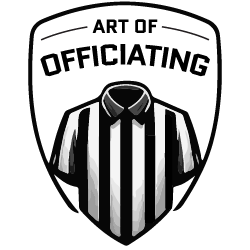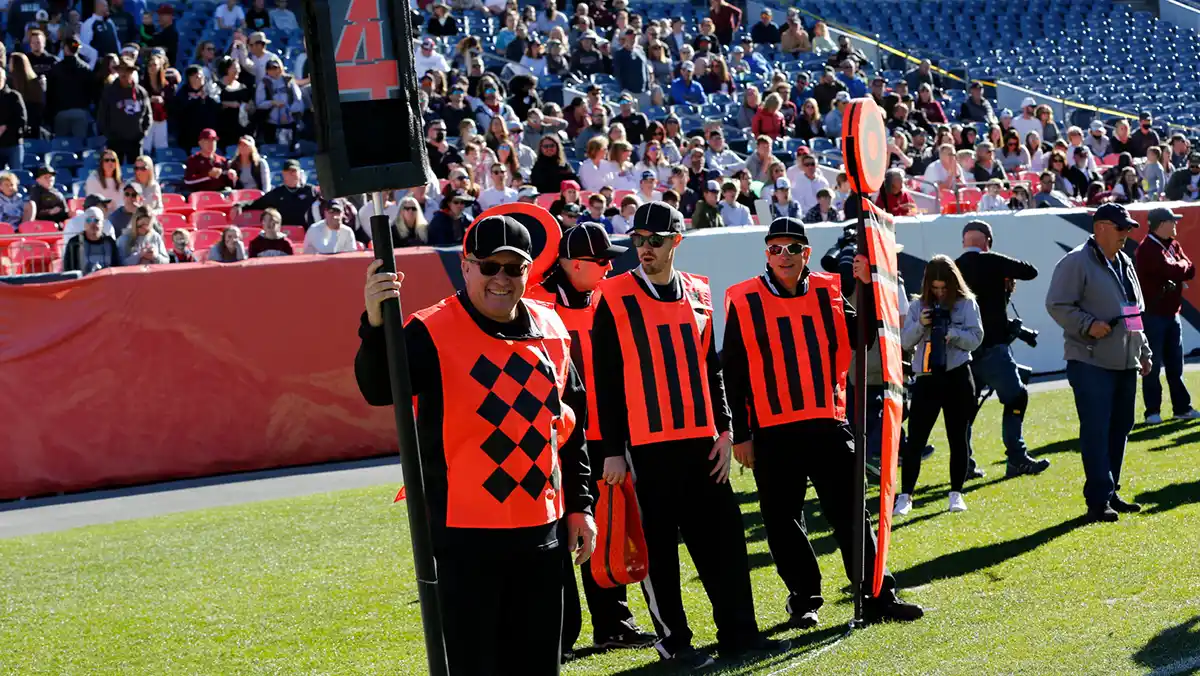The general instructions for football line-to-gain crews is in the Game Resources section. This document provides good foundational information to brief the chain crews. Here are a few other items to consider:
Equipment
I recommend you purchase the cloth clip instead of the round plastic clip. If there is already a clip on the chains, you won’t have to carry a large plastic disk in your pocket for the entire game.
Get a small carabiner to add to the end of your clip. Put the carabiner in your pocket when you hand the clip to the chain crew. If the box is inside the chains at the end of the first or third quarter, clip the carabiner to the chain at the box location. When you reposition the chains, the box person will know exactly where to position the box.
Place a few plastic zip ties in the fold behind the bill of your cap. If the chain separates from the pole, you can use a plastic zip tie to reattach the chain to the pole.
Chain crew and clip positioning
The chain crew can start on the sideline to place the chains and set the clip, but make sure the chain crew moves back the full 2 yards after the chains are set. This gives you the room to work out of bounds and when the chains are between the 25-yard lines, it helps keep the coaches and players behind the chains.

Even if you have only three chain crew members, have the box person position the clip at the first 5-yard line from the back pole. The person on the back pole can hold both the pole and the box while the box person fastens the clip. Don’t let the crew get lazy and fail to properly position the clip.
When you have a penalty flag
The chain crew can help the linesman know when one of the crewmates throws a flag. During the pregame conference, the linesman should tell the chain crew they should not move if they see a flag on the field, even though the linesman is waving them to move the chains.
During penalty enforcement, tell the box person to remain in place until the umpire places the ball at the enforcement spot. If the box person moves with the umpire and we screw up the enforcement, we may not know where to start over. If this happens, the wings can check with a team statistician (if available) to see if that person had recorded the previous spot location.
When the runner passes the line to gain
Don’t let the chain crew move until the HL or the R indicate the first down. Many times the chain crew will move without “permission” when the ball moves past the front pole and may fail to notice a flag on the field. If the chain crew preemptively moves, make sure you reset the chains and box to the previous spot before marching off the penalty yardage.
Chain crew transition
When the chains move a long distance (following a long play or between periods), instruct the crew to move onto the field if the players and/or coaches are in the way. Tell the chain crew they should not snake between the players and coaches as they move.
When you move the chains between the first and third quarters, do not move the chains until the R and U verify the down, distance, yard line, and clip location. If we don’t pay attention and rush to move, we risk making a mistake.
Chain crew decorum
Make sure the chain crew doesn’t interact with the players or coaches on the sideline, coach the players on the field, or have their cell phones out.
When you have issues with the chain crew
You don’t have to tolerate chain crew members who do not follow your instructions, who are distracted or lazy, or who are belligerent toward you or the opposing team. If the opposing team has the ball and is in a rhythm, it’s probably best to wait until a break in action to speak to the referee and request a chain crew member change. If it’s close to half time, you can wait until the intermission to replace the offending member.

